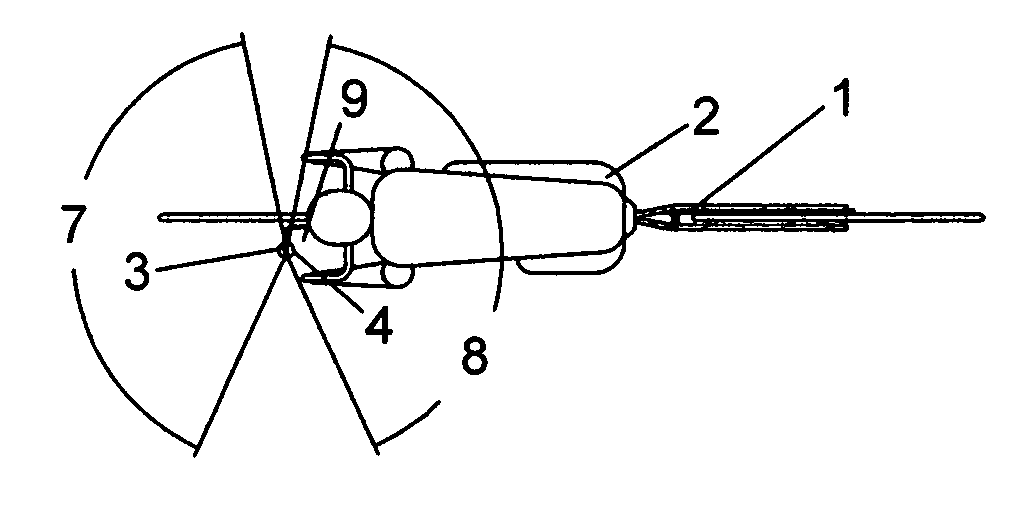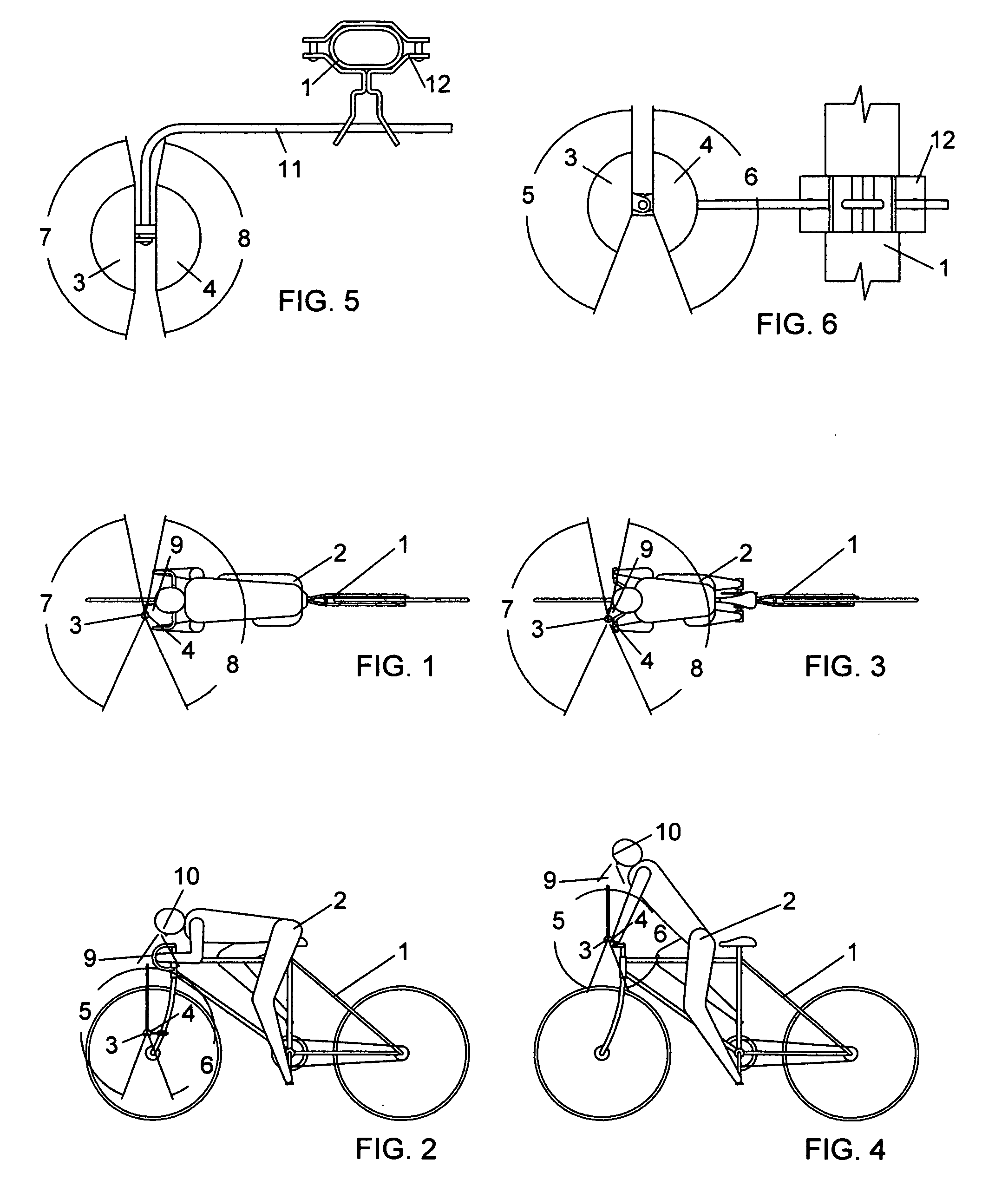Convex bicycle mirror
a bicycle mirror and convex technology, applied in the direction of bicycle mirrors, mirrors, instruments, etc., can solve the problems of limited safety of cyclists, cyclists losing focus, adding a possible danger to cyclists, etc., and achieve the effect of increasing safety for cyclists
- Summary
- Abstract
- Description
- Claims
- Application Information
AI Technical Summary
Benefits of technology
Problems solved by technology
Method used
Image
Examples
Embodiment Construction
[0017] Shown in FIG. 1 is the top view of the standard type two-wheel bicycle 1 being ridden by the cyclist 2 with his body perpendicular to the bicycle and his face 10 pointed toward the ground in the crouched position. The cyclist 1, using his line of sight 9, to view the angle of reflection for an infinite distance 7 and 8 of the assembled convex mirrors 3 and 4 while riding.
[0018] Shown in FIG. 2 is the side view of the standard type two-wheel bicycle 1 being ridden by the cyclist 2 with his spine in a horizontal position and his face 10 pointed toward the ground in the crouched position. The cyclist 1 uses his line of sight 9, to view the angle of reflection for an infinite distance 5 and 6 of the assembled convex mirrors 3 and 4 while riding.
[0019] Shown in FIG. 3 is the top view of the standard type two-wheel bicycle 1 being ridden by the cyclist 2 with his body perpendicular to the bicycle, his buttocks removed from the seat and his spine in an upright position leaning for...
PUM
 Login to View More
Login to View More Abstract
Description
Claims
Application Information
 Login to View More
Login to View More - R&D
- Intellectual Property
- Life Sciences
- Materials
- Tech Scout
- Unparalleled Data Quality
- Higher Quality Content
- 60% Fewer Hallucinations
Browse by: Latest US Patents, China's latest patents, Technical Efficacy Thesaurus, Application Domain, Technology Topic, Popular Technical Reports.
© 2025 PatSnap. All rights reserved.Legal|Privacy policy|Modern Slavery Act Transparency Statement|Sitemap|About US| Contact US: help@patsnap.com


